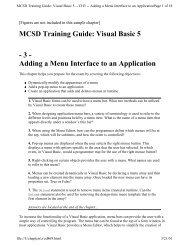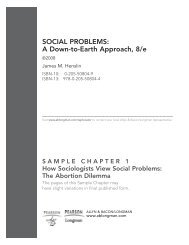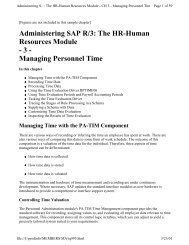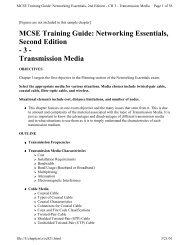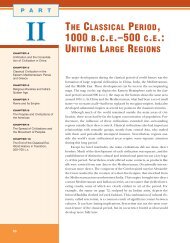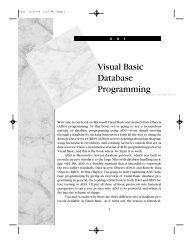3.0—Home Security and Surveillance Systems
3.0—Home Security and Surveillance Systems
3.0—Home Security and Surveillance Systems
Create successful ePaper yourself
Turn your PDF publications into a flip-book with our unique Google optimized e-Paper software.
150<br />
Chapter<br />
................................................<br />
3<br />
External Alarm Monitoring Service<br />
Professional alarm monitoring companies provide 24-hour service for residential<br />
security systems for a monthly fee. Monitoring service attendants have<br />
a computer system <strong>and</strong> display with a database containing information about<br />
each subscriber. As discussed previously, security systems are designed to send<br />
a digital message via phone lines to a central monitoring facility. The attendants<br />
contact police or a private armed response guard to go to the location<br />
where the alarm was activated. Customized response scenarios are established<br />
with the owner <strong>and</strong> the monitoring service for the use of passwords to verify<br />
the identity of the resident when an alarm is triggered. Each monitoring service<br />
offers a set of response options discussed earlier to verify false alarms or<br />
special distress code word if an intruder forces the resident to cancel an alarm.<br />
Remote Access<br />
External access to the home security system by means of telephone lines is<br />
called remote access.<br />
Remote access can be designed into a system that permits the user to call<br />
from a remote site <strong>and</strong> set system parameters or obtain voice-synthesized status<br />
messages concerning any sensor that has detected a value outside programmed<br />
values such as heat, cold, water leakage, loud noises, alarm history,<br />
or other custom features.<br />
Industry St<strong>and</strong>ards for Home<br />
<strong>Security</strong> <strong>and</strong> <strong>Surveillance</strong> <strong>Systems</strong><br />
You will need to know the key st<strong>and</strong>ards <strong>and</strong> codes involved in the installation<br />
<strong>and</strong> configuration of home security <strong>and</strong> surveillance systems. Installers<br />
use these st<strong>and</strong>ards when configuring the security system component location<br />
<strong>and</strong> cabling plan. Although numerous st<strong>and</strong>ards are available for guidance,<br />
local building codes are the final authority when seeking inspection<br />
approvals during the construction phase.<br />
The National Electrical Code<br />
Two sections of the National Electrical Code (NEC) describe requirements<br />
for security <strong>and</strong> surveillance systems. NEC Article 725 describes class 1, 2,<br />
<strong>and</strong> 3; remote control; signaling; <strong>and</strong> power-limited circuits, <strong>and</strong> NEC article<br />
760 describes fire protective signaling systems.





